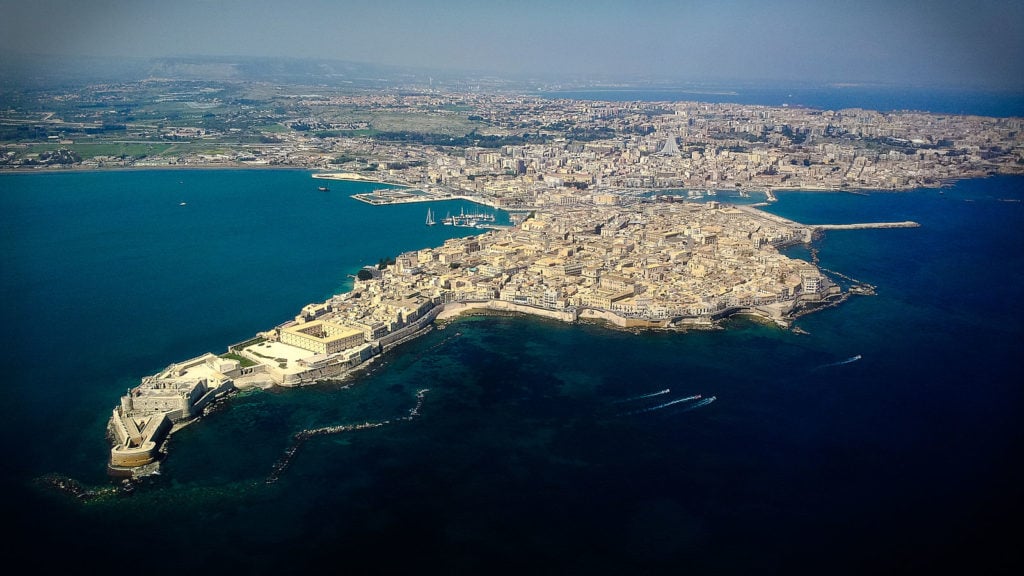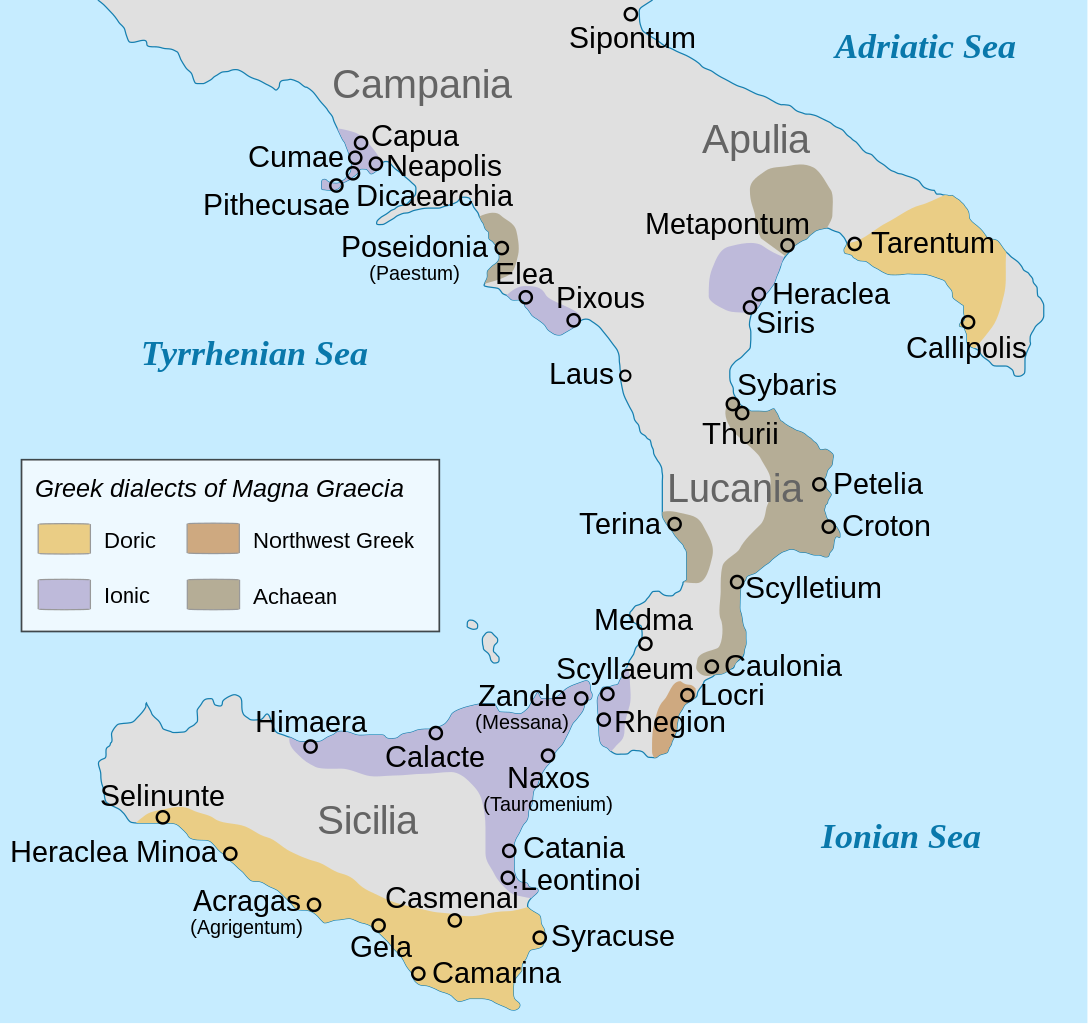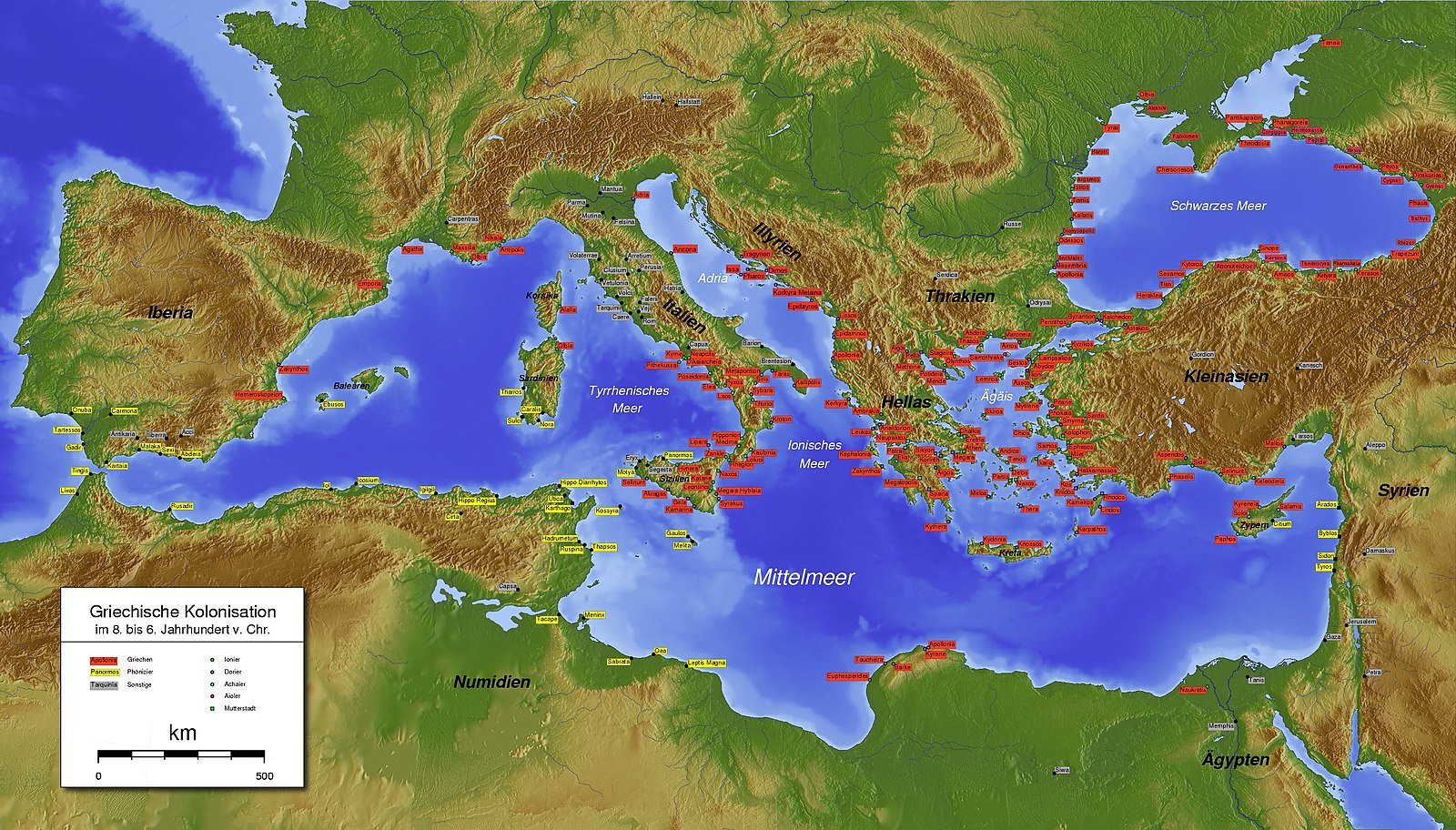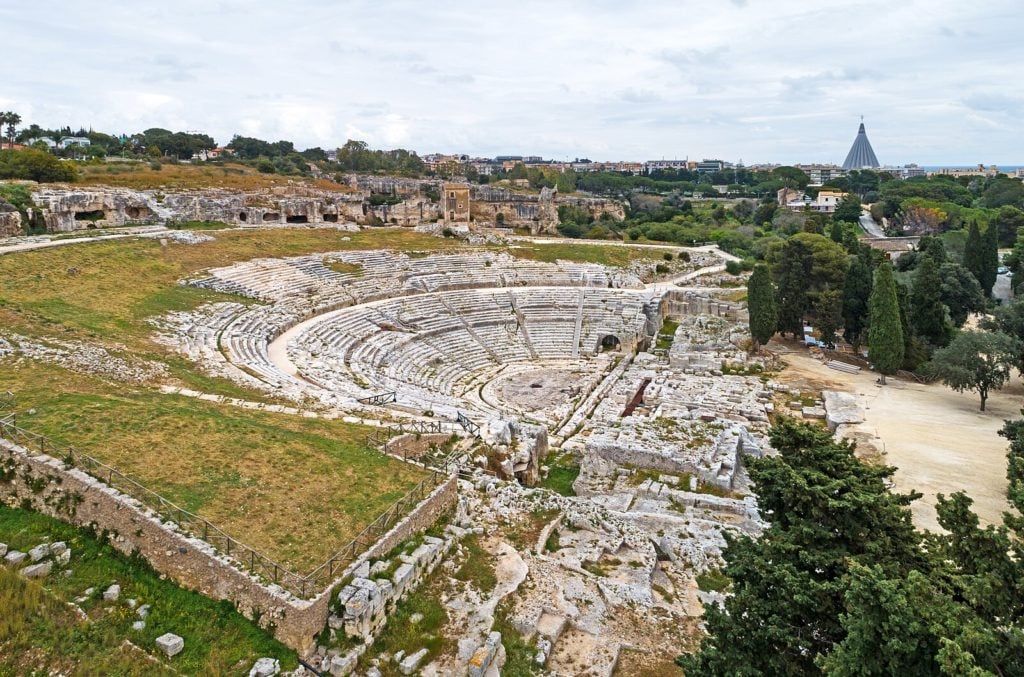
The ancient city-state of Syracuse (Συράκουσαι), was a Greek colony established on the eastern coast of Sicily. The city rose to prominence as a metropolis, a powerful center of trade and Greek culture. Syracuse was declared by the Roman philosopher Cicero as his favorite and most beautiful Greek City.
The birth of the ancient Greek city of Syracuse
One of the legends of Syracuse, included Arethusa, a nymph of Greek goddess Aphrodite. The tale follows that she sought refuge from the persistent advances of the river god Alpheus.
In response to Arethusa’s plea, Artemis transformed her into a spring, allowing her to escape beneath the earth. Despite this metamorphosis, Alpheus, undeterred, pursued her, and their underground waters eventually intertwined.
These myths, far from mere tales, became central to the lives of the Syracusans. The city, influenced by these foundational narratives, erected sanctuaries in honor of Demeter and Persephone/Kore.
The annual festival at the sacred Ciane Spring reflected the deep cultural and religious ties of the inhabitants to these myths.
Arethusa, symbolizing Syracuse, and the likenesses of her and Persephone graced the city’s coins. She served as a constant reminder of the intertwined nature of myth and daily life in Syracuse.
The fact beyond the myth
The founding of the ancient Greek city-state of Syracuse in approximately 733 BC marked a pivotal moment in the history of ancient Sicily. Led by Archias, a member of the ruling Heraclid family in Corinth, the Corinthians sailed to Sicily, seeking a new beginning. Archias, initially exiled voluntarily from Corinth due to a tragic incident involving the death of a youth he coveted, arrived in Sicily with a group of volunteers.
Strabo, the ancient Greek geographer writing around 20 AD, recounts the intriguing circumstances surrounding Syracuse’s foundation. Archias, during an oracle consultation with Myscellus at Delphi, opted for wealth, leading to the establishment of Syracuse, while Myscellus chose health and founded Croton. The subsequent prosperity of Syracuse became so renowned that it gave rise to a proverb characterizing extravagance—’the tithe of the Syracusans would not be sufficient for them.’
Landing near the mouth of the Anapo River on the Great Harbour, the Corinthians were drawn to the site’s natural advantages—safe harbors, freshwater springs, defensible terrain, and ample land for cultivation.
Having subdued the native Sicels, whom they intermarried with and used as slaves, the Corinthians established themselves on the island, naming it Ortygia after the Greek word for quail. The settlement, dedicated to Artemis, was developed with the assistance of Sicel labor and Corinthian architects.
Syracuse and Magna Grecia

The Greek colonization of Sicily burgeoned in this era, with cities like Naxos (Νάξος), Megara (Μέγαρα), Leontini (Λεοντῖνοι), Catana (Κατάνη), and Megara Hyblaea (Μέγαρα Ὑβλαία) being founded.
Sicily became a magnet for settlers, offering opportunities for land acquisition and wealth creation, akin to America in the ancient world. Despite the success, the multi-ethnic origins of Sicily, with tribes like the Sicans, Elymians, and Sicels, posed challenges.
The Greeks absorbed the Sicel lands along the coast, while the Phoenicians, originally engaging in trade, later transformed into a formidable enemy with the rise of Carthage.
Carthage, with its maritime and trading skills, absorbed the Phoenician civilization and emerged as a powerful adversary for the Greek cities in Sicily. The stage was set for conflicts that would shape the destiny of Syracuse and its fellow Greek colonies in the centuries to come.
The beginning of an empire
Syracuse became the definition of an Ancient Greek metropolis outside of mainland Greece. Through the rise of the Syracusan state, it followed the ancient Greek metropolitan trend of establishing colonies. The colonies facilitated trade routes, provided essential resources, and extended the cultural influence of Syracuse to distant shores.
While the specific details of each colony may be elusive, their collective impact is evident in the historical narrative of Syracuse, which, despite facing its share of conflicts and challenges, maintained a formidable presence in the Mediterranean world.
Syracuse established colonies mostly in Southern Italy. The colonies associated with Syracuse in Southern Italy were Acrillae (Ἄκριλλαι), Casmenae (Κασμέναι), Kamarina (Καμάρινα) Akrai (Ἄκραι), Helorus (Ἔλωρος), Adranon (Ἀδρανό), Tyndarion (Τυνδαρίς), and Tauromenos. Noteworthy are the two northern Adriatic ones, Ancona (Ἀγκών) and Vis (Ἴσσα) in Italy and Croatia, respectively.
Specific details about these colonies are somewhat limited due to the passage of time and scarcity of historical records. However, such colonies contributed to the expansion of Syracusan influence.

Democracy and interactions with mainland Greece
The shift from aristocratic rule to democracy occurred following a popular uprising led by Hippocrates. However, this democratic era was short-lived, as the tyrant Gelon assumed power in 491 BCE. This led Syracuse to a period of golden age after defeating the Carthaginians at the Battle of Himera in 480 BCE.
Syracuse became a cultural center, attracting literary luminaries such as Aeschylus, Simonides, and Pindar. Hieron, Gelon’s successor, continued expansionist policies and undertook the reconstruction of the temple to Athena.
Democracy was later restored, but territorial losses followed the death of Hieron. Wars against Athens tested Syracuse’s resilience, but the city ultimately emerged victorious. Further democratic reforms by Diocles strengthened the political structure.
The Sicilian Expedition in 415 BCE marked a significant conflict. Athens, led by Alcibiades, attempted to invade Sicily but faced fierce resistance from Syracuse. The intervention of Corinth’s Gylippus turned the tide, leading to the defeat of the Athenians.
Syracuse’s survival in this conflict marked a turning point. As a result, despite fighting for another decade, Greece ultimately lost the Peloponnesian War.
Era of tyrants and dusk of ancient Greek Syracuse
The ancient Greek metropolis was governed by different systems, though it was mostly composed of tyrants. The era of tyranny began with Dionysius I, who faced wars against Carthage but established Syracuse as a military and cultural powerhouse.
His innovations in military tactics, such as the use of artillery and siegecraft, contributed to his lasting fame. Successive rulers, including Dionysius II, Timoleon, and Agathocles, along with the arrival of Pyrrhus, marked periods of instability and change.
Under Hieron II, Syracuse experienced a revival in the Hellenistic period, marked by cultural and architectural achievements. However, its alliance with Carthage against Rome led to its demise.
In 211 BC, the Roman siege and the sack of Syracuse, led by Roman commander Marcus Claudius Marcellus, marked its Hellenistic downfall. Despite the ingenious inventions of Archimedes, the city succumbed to Roman rule.

Syracuse continued to play a significant role in Roman times, becoming a provincial capital in 21 BCE. Augustus initiated urban improvements, including a new square, triumphal arch, aqueduct, and amphitheater.
The city thrived well into the 3rd century CE, maintaining importance as a Christian center until the 7th century CE. In 878 CE, Syracuse fell to Arab forces, marking the end of its long history as a bastion of Greek and Roman culture. The tale of Syracuse is one of resilience, cultural richness, and the ever-changing tides of history.
See all the latest news from Greece and the world at Greekreporter.com. Contact our newsroom to report an update or send your story, photos and videos. Follow GR on Google News and subscribe here to our daily email!



